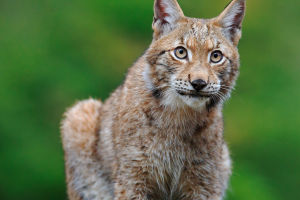Japan is known for its cat culture, and Japanese people have a deep love for cats. Let us explore the cat culture in Japan together.
During the Edo period, the development of the agricultural mulberry industry was the main focus. Sericulture was most afraid of rats, so someone sold paintings with cats on them to sericulture farmers as a guardian symbol to ward off rats.
This led to the cat becoming a good luck charm for sericulture farmers.
In the early days of the cat's arrival in Japan, only the imperial family had the right to keep cats during the Nara period due to the limited number and the heavy responsibility of protecting the scriptures from rats.
Cats were worshipped and admired by the Japanese people at that time. It was not until the Meiji period that cat breeding became popular and widespread. According to statistics, there were 25,568 cats in the city of Tokyo alone.
Since then, Japanese people have been closely associated with cats and have created a lot of cat-related language in their daily lives.
In modern times, cats have become not only pets but also companions in Japanese people's lives, bringing comfort to people under great social pressure. Due to the cats' cuteness and unique character traits, many cultural industries such as cat-related characters and projects have emerged.
In Japan, cats are viewed as noble animals, receiving all kinds of care and attention from humans. There are countless cat-friendly products, services, and peripherals. For instance, a "cat beauty package" that includes bathing, nail clipping, and haircutting can cost up to 60,000 yen.
In supermarkets, there is a wide variety of "cat food," including "canned cat food," "cat rice," and "cat drinks."
One of the reasons for cat fever in Japan is the changing social conditions in Japan. Japanese people can relate to cats more than ever before. Japan is facing a serious problem of fewer children, and smaller families are becoming more and more common.
As the number of family members decreases, cats are not only valued as pets but are also given the status of family members.
The image of cats can be seen everywhere in Japan. The cat is a typical representative of the cat image and is even found outside Japan's national gate. People love the chubby stature and silly smile of cats.
The cat originated from Japan and has been regarded as a good luck charm since ancient times. In Japan, the legend of the cat can be traced back to the Edo period, more than 400 years ago, but the actual appearance of the pottery cat was only 150 years ago.
Cats occupy an unshakable position in Japanese culture. Physical businesses spawned by the cat theme, such as cat cafes, cat-themed grocery stores, and cat-themed bookstores, are ubiquitous elements in the daily lives of Japanese people.
Another popular cultural phenomenon in Japan related to cats is the cat island or "Tashirojima" in Miyagi prefecture. The island is home to more cats than people and has become a tourist destination for cat lovers worldwide.
The island's cats are well taken care of by the locals and have become an integral part of the island's culture and economy.


